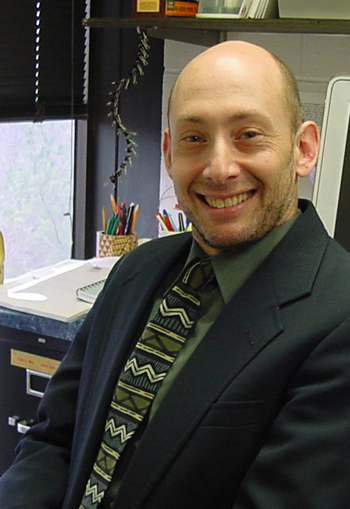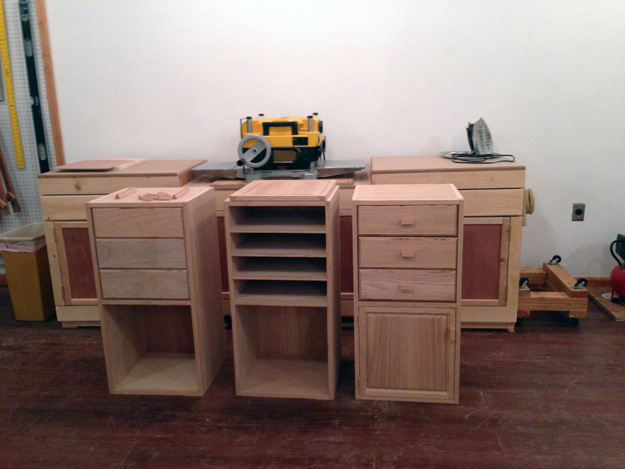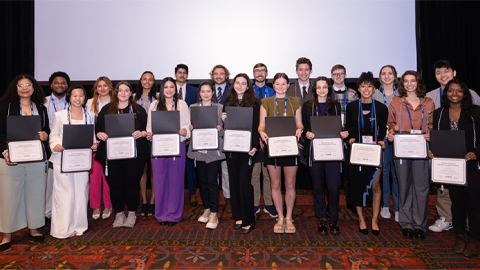Meet Jeffrey Pessin
Jeffrey Pessin, director of the Diabetes Research Center at Albert Einstein College of Medicine, joined the ranks of the associate editors at The Journal of Biological Chemistry in November 2012. Pessin has won awards for his work on the molecular underpinnings of diabetes and in 2011 was elected to be a fellow of the American Association for the Advancement of Science. The interview has been edited for length and clarity.

Would you briefly explain what your research group is studying and how you entered the field?
We are examining the signaling pathways and integrative physiology that are responsible for diet-induced adipose tissue inflammation and development of fatty liver disease. I got into this area because Michael Czech (now at the University of Massachusetts) gave a seminar when I was a graduate student (at the University of Illinois). I was very impressed by the seminar. So I applied to his lab, and he accepted me. He was interested in insulin regulation and glucose metabolism. That, to me, was just a fascinating topic. The science and the experience of discovery were unbelievable. It was a tremendous environment. Dr. Czech’s laboratory was the first to identify the complex subunit structure of the insulin receptor and to identify the nature of the facilitative glucose transporter proteins. When I opened my own lab, I wanted to do work along the same lines, because I was so excited by the data and the findings. One thing just evolved into the next and the next, and now I’ve been doing this for 30 years! We’re still finding new and exciting data by examining the mechanism controlling glucose and lipid metabolism that underlies the fundamental basis for insulin resistance and Type 2 diabetes.
Is your research mostly basic science?
There has been a shift these days. When I first started, our research efforts were entirely basic, using tissue culture or biochemically reconstituted systems in vitro. We still do some basic, hardcore biochemical research, but primarily our interests are in using animal models to study integrative physiology and the mechanisms responsible for altered pathophysiologic states. Science has dramatically changed over the years. For example, only a few years ago, if you needed to express a protein or identify a gene, you had to clone it yourself. Now you simply order it. Moreover, making genetically engineered mice was a very expensive, time-consuming and labor-intensive process. Although still expensive now, many genetic mouse models are available, and more are becoming available at a rapid pace. Even for those not yet (readily) available, there are a variety of sources that will make the mice for you. I like to consider our efforts preclinical, as we use a lot of knockout and transgenic mice.
How did you choose science as a career?
I knew I wanted to be a scientist when I was in college. Before then, I wanted to be a professional basketball player. But I wasn’t tall enough, so I didn’t quite make it as a college player. So I thought, “I’d better learn some things!” When I went to college (at City University of New York), I started out as a chemist, because my adviser told me that to be a good biochemist I needed to be a good chemist first. I did my undergraduate and master’s degrees in chemistry. Then I decided to apply to biochemistry departments because I wanted to learn about metabolic pathways and enzymes. That’s what I started doing as a graduate student. Toward the end of my graduate career, Mike Czech came to the university to give a talk. I was so inspired that I said, “That’s the guy I want to work for!”
 Do you still play basketball?
Do you still play basketball?
No, I’m too old. I stopped when I was in my mid-40s because of my knees. I injured my knees too much. At the University of Iowa (Editor’s note: Pessin was a member of the faculty there between 1983 and 2003), I played in the prime-time league. I played with B.J. Armstrong and Brad Lohaus. So I’ve played with some NBA players. It was tough playing against those guys, because they were bigger, stronger and faster, but I was able to hold my own. It was actually a lot of fun. Now I play tennis. It’s a lot easier on the body!
What does it mean to you, on a personal level, to be an associate editor for JBC? What was your reaction when you were asked to be an associate editor?
I was honored but concerned over the amount of effort that this would take. After talking to (Editor-in-Chief Martha Fedor), I decided it was an important aspect of the peer-review process and that I should give it a try. I made my career publishing in the JBC. If you ever look at my CV, you’ll see that for the first 25 years it’s mostly JBC.
What do you do outside of the lab? Hobbies?
I am an amateur cabinetmaker and make various types of furniture. I started it when I was in graduate school. My wife and I, we both grew up in New York. It was a pretty difficult place to live in the 1960s and 1970s. There was a lot of crime with drug violence. Once, there was a gun fight right in front of my house. I grew up in a rough neighborhood. We both decided we wanted to get out of there, so when I graduated college we decided I was going to graduate school (outside of New York). We came from poor families. I picked the school that gave me the biggest stipend, which was the University of Illinois. We moved there. We were out of place. We both grew up in Brooklyn, and here we were in the middle of the Midwest, where we knew nothing about anything. There were two people with whom we had our orientation picnic, Pam Anderson and Peter Torgenson. We hit it off with them, and they took us under their wing to show us what it was like to live outside of New York!

Peter did a lot of woodworking, and he showed me how to handle wood, how to join pieces together using just chisels to cut mortise and tenon joints. Then I bought a couple of books. Peter and I would talk about woodworking, and we would do projects together. I’ve made three-quarters of our bedroom furniture. I’ve made nightstands, dressers, headboards and lots of picture frames. I just built my sister a set of cabinets for her kitchen. It takes time, and I do it slowly just for fun.
What do you think is the most exciting thing about science these days?
The rate of discovery now is incredible compared to before, and we’re only still touching the tip of the iceberg. It’s a very exciting time, but it’s also much more difficult. There’s a lot more information you have to sift through. But as we’re learning more, it’s becoming more comprehensible, because things are beginning to make sense now. That’s why we are in the best time to develop therapeutics for various diseases.
In the old days, it was hit-and-miss. Almost all drugs before the last 10 years came from random screenings. But we’re actually at the point now where we can make integrated predictions about how a drug will work and how to select for those with higher therapeutic potential. We are also beginning to develop personalized medicine. There are a couple of examples. Plavix is a drug like that. (Editor’s note: Plavix, also called clopidogrel, is an anti-blood clotting agent.) There are certain people who have an enzyme difference that prevents the metabolism of Plavix into its active form, and these patients should be treated with other antiplatelet therapies.
The sad part is that the funding is the worst it has ever been. I’ve never seen funding so difficult … in my whole (scientific) history since 1975. We’ve gone through very difficult times in the past, but nothing like this. We are at the point where we can make tremendous breakthroughs, but, at the same time, we’re being held back because of a lack of funding.
For scientists in training, do you have any words of wisdom or a favorite motto?
Don’t try to predict where science will take you. It is much better just to enjoy the journey.
Enjoy reading ASBMB Today?
Become a member to receive the print edition monthly and the digital edition weekly.
Learn moreGet the latest from ASBMB Today
Enter your email address, and we’ll send you a weekly email with recent articles, interviews and more.
Latest in People
People highlights or most popular articles

ASBMB inducts new honor society members
Chi Omega Lambda, which recognizes exceptional juniors and seniors pursuing degrees in the molecular life sciences, has 31 inductees in 2024.

2024 voter guide
Learn about the candidates running for ASBMB Council, Nominating Committee, Publications Committee and treasurer.

Charles O. Rock (1949 – 2023)
Colleagues and trainees remember a world expert in membrane lipid homeostasis.

Honors for Clemons, Hatzios and Wiemer
Awards, honors, milestones and more. Find out what's happening in the lives of ASBMB members.

Touching the future from the bench
Scholar, scientist, teacher and mentor Odutayo Odunuga discusses the important roles of the institutional PI, his journey and his research.

In memoriam: Darwin Prockop
He held leadership positions at multiple institutions and was known for his contributions to adult stem cell biology and cellular biology.

